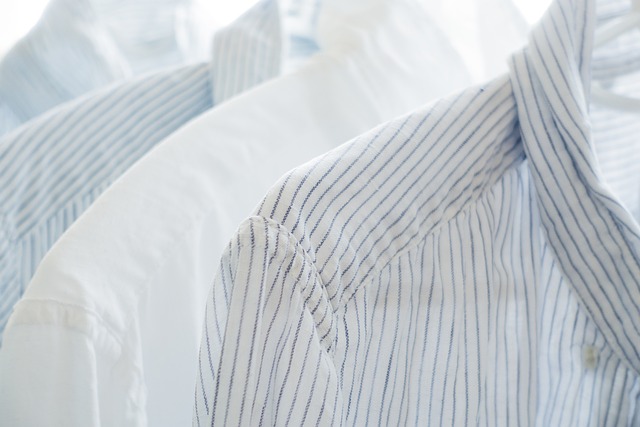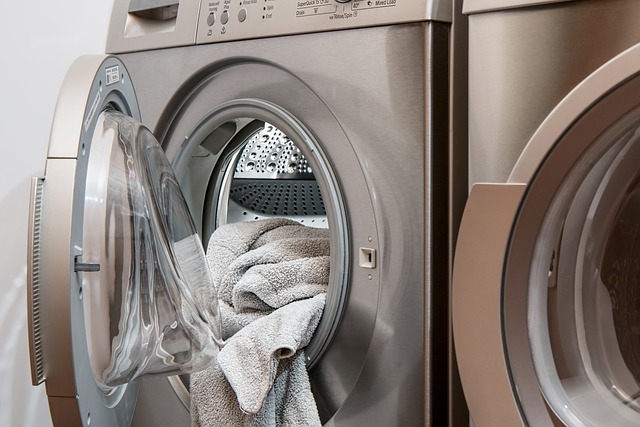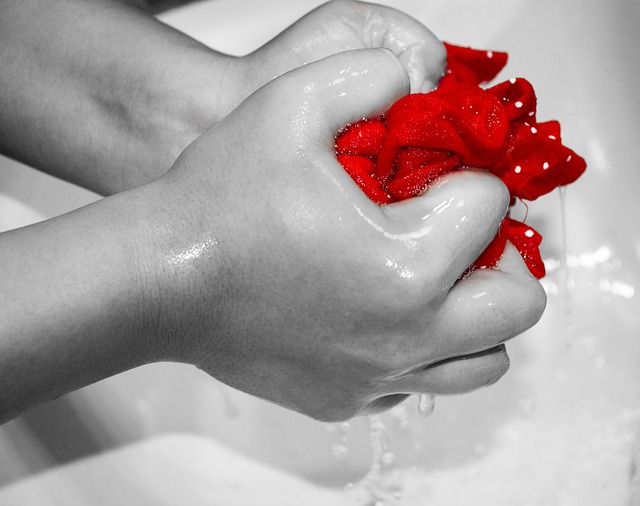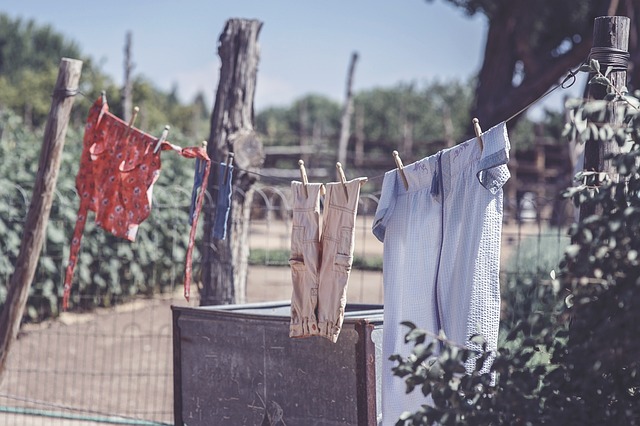As an Amazon Associate I earn from qualifying purchases.

To wash white clothes:
Sort clothes by color and fabric type.
Sorting clothes by color is important to prevent dye transfer and fading. This means separating light and dark colored clothes, as well as whites, to ensure that the colors stay true. Dye transfer occurs when color from one garment transfers to another, causing discoloration. By sorting clothes by color, you can prevent dye transfer and keep your clothes looking vibrant.
Sorting clothes by fabric type is also crucial for proper care. Different fabrics require different washing and drying methods, such as water temperature and agitation. For example, delicate fabrics like silk or lace should be hand washed or put in a lingerie bag before being placed in the washing machine. Heavily soiled items may also need a different wash cycle than lighter items. Proper sorting by fabric type will ensure that your clothes receive the right care and last longer.
Read the care label for specific instructions.
Reading the care label before washing your clothes is an important step in maintaining their quality and appearance. The care label provides specific instructions on how to clean and care for the garment, including the recommended water temperature, recommended detergents, and drying instructions. It’s essential to follow these instructions to ensure the longevity of your clothes and to prevent damage such as shrinkage, fading, and fabric distortion.
Moreover, following the care label instructions can also protect the environment by reducing water and energy waste during the washing process. Understanding the care label can also save you time and money by reducing the need for expensive dry cleaning or repairs for clothes that have been damaged due to incorrect washing and drying methods.
Therefore, always take a few seconds to read the care label before washing your clothes, and follow the instructions carefully. This simple step can make a big difference in keeping your clothes looking great and lasting longer.
Use a detergent specifically for white clothes to prevent yellowing.
Using a detergent specifically designed for white clothes can help prevent yellowing over time. Normal detergents contain optical brighteners that can give clothes a bright appearance, but they can also cause yellowing over time, especially on white clothes. Detergents for white clothes do not contain these brighteners and are formulated to help keep white clothes looking bright and fresh.
When washing white clothes, it’s important to choose a detergent that is specifically designed for white clothes. These detergents often contain ingredients that help to remove stains and keep white clothes looking bright, even after multiple washes. By using a detergent specifically for white clothes, you can ensure that your clothes stay white and don’t yellow over time, keeping them looking new and fresh for longer.
Use warm water for white cotton items. Hot water can cause shrinkage and fading.
Washing white cotton clothes in warm water is recommended as it helps to maintain the brightness and integrity of the fabric. Hot water can cause shrinkage and fading, which can lead to a dull appearance and misshapen clothing. Shrinkage occurs when the fibers of the fabric contract due to exposure to high heat, causing the garment to become smaller. Fading occurs when the color of the fabric fades or changes due to exposure to light or heat. Both shrinkage and fading can reduce the longevity of the clothes, so it’s important to be mindful of the temperature of the water when washing white cotton items. Using warm water can help to avoid these issues, allowing the clothes to maintain their shape, size, and color for a longer period of time.
Avoid using bleach unless the label specifically calls for it.
Using bleach on white clothes can be a great way to brighten and sanitize them, but it’s important to use it only when necessary. Overuse of bleach can cause damage to the fabric and lead to discoloration and yellowing. Additionally, certain fabrics such as silk, wool, and spandex can be ruined by bleach. Before using bleach, always check the care label on the clothing to determine if it’s safe to use. If the label doesn’t specifically call for the use of bleach, it’s best to avoid using it and opt for alternative whitening methods, such as using a whitening detergent or soaking the clothes in a solution of baking soda and water. By being cautious and following the care label instructions, you can keep your white clothes looking bright and fresh for a long time.
Dry the clothes according to the care label instructions, either in a dryer or air-drying.
Drying your clothes according to the care label instructions is an important step in keeping them looking their best. The care label will tell you whether it is safe to use a dryer or if air-drying is recommended.
If the care label allows for using a dryer, it’s important to choose the right heat setting. High heat can cause shrinkage and damage to delicate fabrics, so use the lowest heat setting that will still dry your clothes thoroughly. It’s also a good idea to remove your clothes from the dryer while they are still slightly damp to reduce wrinkles.
If air-drying is recommended, it’s important to choose a suitable location. Avoid exposing your clothes to direct sunlight, as this can cause fading, and hang them away from any sources of heat, such as a radiator or heater. It’s also a good idea to turn your clothes inside out to help protect the color. Depending on the weather, air-drying can take several hours, but it’s a gentle and effective way to dry your clothes without causing any damage.
Remove clothes from the dryer while they are still slightly damp to avoid wrinkles.
Removing clothes from the dryer while they are still slightly damp can help to prevent wrinkles. When clothes are left in the dryer for too long, they can become fully dried and wrinkle as they cool down. The heat from the dryer causes the fibers in the clothes to relax, making them easier to wrinkle. By removing the clothes while they are still slightly damp, the fibers are still warm and pliable, making it easier to smooth out any wrinkles.
Additionally, removing clothes from the dryer while they are still slightly damp also allows for air-drying the rest of the way, which can save energy and reduce wear and tear on the clothes from the dryer. It also provides an opportunity to fold or hang the clothes properly to prevent additional wrinkling.
In summary, removing clothes from the dryer while they are still slightly damp is a simple but effective way to avoid wrinkles and keep clothes looking freshly pressed.
Amazon and the Amazon logo are trademarks of Amazon.com, Inc, or its affiliates.




